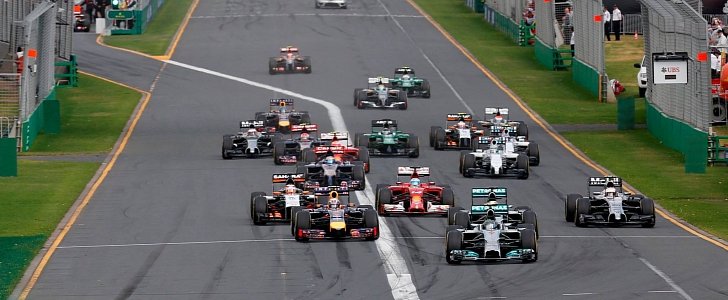After two days of debates between the F1 Strategy Group in Geneva, an agreement was signed to cut engine prices for customer teams, this way ensuring the entire grid is supplied.
As part of the deal, the current V6 turbo hybrid engines will power F1 cars until at least 2020. With details not yet finalized, the new regulations will come into effect most likely in 2018.
Also as a measure to reduce costs, drivers will be limited to three gearboxes per season, two less than the current limit of five. It is not yet known what prices we are talking about, but the FIA is aiming at a sum of around €10 million ($10,9 million) to €12 million ($13,1 million), which is good news considering the teams are currently paying somewhere between €18 million ($19,6 million) and €23 million ($25 million).
This agreement puts an end to the threat of the introduction of a cheaper alternative engine - a proposition rejected by teams last autumn when, after failing to agree on the cost of customer engines, Formula 1 Group CEO Bernie Ecclestone and FIA president Jean Todt tried to implement this idea, as BBC reports.
In mid-December 2015, the carmakers came up with their own proposals to cut costs and included three main focus areas. Firstly, they wanted to try and extend the life of the power units so that only three would be needed per season. Secondly, they proposed to stop any investment made in parts that have nowhere to develop anymore. Finally, they wanted to make a list of standard parts that could be delivered by only one supplier and let the carmakers decide for other electrical motor systems.
Maybe the most affected team from the F1 grid was Red Bull as it ended its partnership with Renault and was unable to secure a power unit from any of the other suppliers, Mercedes, Ferrari or Honda.
In the end, the title-winning team found a solution for this season and is going to use Renault engine badged with one of its main sponsors, TAG Heuer. This doesn’t mean the crisis is over, because the agreement is only for 2016, so the Austrian team still has to find an eligible engine for 2017.
Also as a measure to reduce costs, drivers will be limited to three gearboxes per season, two less than the current limit of five. It is not yet known what prices we are talking about, but the FIA is aiming at a sum of around €10 million ($10,9 million) to €12 million ($13,1 million), which is good news considering the teams are currently paying somewhere between €18 million ($19,6 million) and €23 million ($25 million).
This agreement puts an end to the threat of the introduction of a cheaper alternative engine - a proposition rejected by teams last autumn when, after failing to agree on the cost of customer engines, Formula 1 Group CEO Bernie Ecclestone and FIA president Jean Todt tried to implement this idea, as BBC reports.
In mid-December 2015, the carmakers came up with their own proposals to cut costs and included three main focus areas. Firstly, they wanted to try and extend the life of the power units so that only three would be needed per season. Secondly, they proposed to stop any investment made in parts that have nowhere to develop anymore. Finally, they wanted to make a list of standard parts that could be delivered by only one supplier and let the carmakers decide for other electrical motor systems.
Maybe the most affected team from the F1 grid was Red Bull as it ended its partnership with Renault and was unable to secure a power unit from any of the other suppliers, Mercedes, Ferrari or Honda.
In the end, the title-winning team found a solution for this season and is going to use Renault engine badged with one of its main sponsors, TAG Heuer. This doesn’t mean the crisis is over, because the agreement is only for 2016, so the Austrian team still has to find an eligible engine for 2017.
